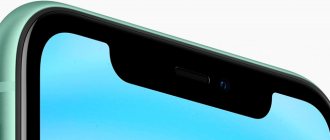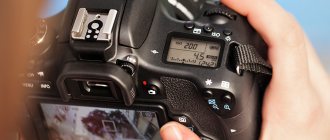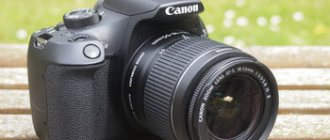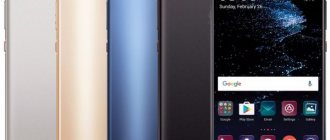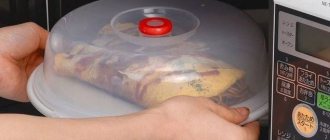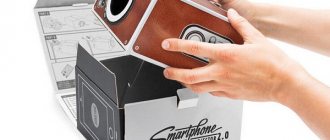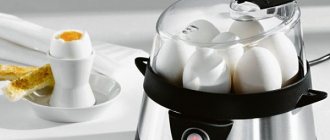What is a SLR camera?
A DSLR is a camera whose viewfinder is based on a mirror. In general, there are single-lens and double-lens SLR cameras. But since in the world of digital photography there is only room left for the first type, it will be discussed further.
The first single-lens reflex camera appeared in 1861. Yes, while serfdom had just been abolished in Russia, the camera had already been invented in England. That is, the history of the SLR camera began in the century before last, more than 150 years ago.
Of course, the first SLR cameras were very different from what we have now. One of the differences is the use of film. Today, film, as you all know very well, is practically extinct and exists only thanks to enthusiasts who fell in love with film photography once upon a time. Digital technologies have made it possible to replace the film in the camera with a matrix.
Let's return to the design of a SLR camera. Every DSLR has a mirror-based viewfinder. The mirror stands at an angle of 45 degrees and allows you to see a real non-digitized image through the viewfinder. The mechanism, in general, is quite simple from the point of view of understanding. Through the lens, light (and the image, respectively) enters the camera body, where a mirror is installed at an angle of 45 degrees. The light reflected by the mirror rushes upward, where it enters a pentaprism (or pentamirror), which wraps around the image, giving it its normal orientation. Simply put, if there were no pentaprism, the image in the viewfinder would appear upside down. That's all. This is the optical viewfinder - a distinctive feature of any DSLR.
Semi-professional models
Note! These are practically professional cameras with powerful hardware and an abundance of functions.
The models presented below are inferior to the “pros” only in the burst shooting speed and shutter life time.
Olympus OM-D E-M10 Mark III Kit
The Olympus OM-D E-M10 Mark III Kit is a compact system camera with an ergonomic design that's incredibly comfortable to use.
The device allows you to take clear pictures and smooth videos even in the most difficult conditions.
The 16.1-megapixel matrix provides high detail, bright and rich colors, and an ultra-fast autofocus system allows you to quickly focus on any object.
A five-axis stabilizer and built-in auto modes guarantee optimal shooting results; the necessary parameters are set without user intervention.
Post-processing will turn the author's frame into a work of art.
Main characteristics:
- supported lenses - Micro 4/3 (included);
- matrix - 16.1 MP, 4608 × 3456;
- display - 3″, rotating, touch;
- focus - contrast type;
- interfaces - Wi-Fi, USB, HDMI;
- battery capacity - 330 photos;
- video - 3840 × 2160, 120 fps;
- features - orientation sensor, HDR;
- Dimensions and weight - 122 × 84 × 50 mm, 410 g.
Advantages
- light weight;
- high quality photos and videos;
- adjustable stabilization;
- no noise at high ISO;
- clear and fast autofocus.
Flaws
- weak battery;
- the screen rotates only in one plane;
- Inconveniently implemented panorama shooting.
Sony Alpha ILCE-6400 Body
The camera with interchangeable lenses Sony Alpha ILCE-6400 Body, with its rich functionality, is able to surprise everyone, allowing you to enjoy the shooting process and excellent results.
The device uses a CMOS matrix with a resolution of 24.2 MP and physical dimensions of 23.5 × 15.6 mm.
High focusing speed ensures sharp photos and videos with stunning detail.
The camera supports sensitivity from 100 to 32000 ISO, the maximum shooting speed reaches 11 frames per second.
The model uses an improved autofocus algorithm, wireless technologies Wi-Fi, NFC, Bluetooth.
Main characteristics:
- supported lenses - Sony E (optional);
- matrix - 24.2 MP, 6000 × 4000;
- display - 2.95″, rotating, touch;
- focus - hybrid type;
- interfaces - Wi-Fi, USB, audio, Bluetooth, HDMI, NFC, remote control port;
- battery capacity - 410 photos;
- video - 3840 × 2160, 120 fps;
- features - metal body, digital zoom 8x, moisture/dust protection, HDR;
- Dimensions and weight - 120 × 67 × 50 mm, 403 g.
Advantages
- photo quality is up to par;
- flexible settings;
- large range of supported optics;
- high dynamic range RAW;
- high quality built-in microphone.
Flaws
- not the best video quality;
- no headphone jack;
- memory card slot in the same compartment as the battery.
Fujifilm X-T30 Kit
The Fujifilm X-T30 Kit mirrorless camera features a durable metal alloy body and is equipped with technologically advanced solutions for flawless photography and video.
The X-Trans CMOS IV sensor is complemented by a self-cleaning option and has a crop factor of 1.5.
Optical image stabilization works in conjunction with white color balancing.
It is possible to set the required exposure. The built-in flash operates at a distance of up to 7 m from the subject.
The design of the model involves the use of a lens with an X Mount mount and an electronic viewfinder with an eyepiece.
Main characteristics:
- supported lenses - Fujifilm X Mount (included);
- matrix - 26.1 MP, 6240 × 4160;
- display - 3″, rotating, touch;
- focus - hybrid type;
- interfaces - Wi-Fi, USB, audio, Bluetooth, HDMI, remote control port;
- battery capacity - 380 photos;
- video - 4096 × 2160, 120 fps;
- features - metal case;
- Dimensions and weight - 118 × 83 × 47 mm, 333 g.
Advantages
- integration with mobile devices;
- high burst speed;
- numerous and flexible settings;
- Easy access to parameters on control dials.
Flaws
- tight movement of the lens zoom ring;
- lack of a separate charger;
- video duration limit;
- overheating when shooting video.
Fujifilm X-T3 Body
The compact Fujifilm X-T3 Body mirrorless camera in a body made of high-quality materials is distinguished by its low weight and protection from low temperatures.
The model comes without optics; it can be equipped with an X Mount from Fujifilm.
The device is equipped with a touch screen, an X-Trans CMOS IIII matrix with a working resolution of 26.1 MP and physical dimensions of 23.5 × 15.6 mm.
The matrix crop factor is 1.5, photosensitivity is from 160 to 12800 ISO, with the ability to increase it in extended mode to 80-51200 ISO. The device supports SD, SDHC, SDXC memory cards up to 512 GB.
Main characteristics:
- supported lenses - Fujifilm X Mount (optional);
- matrix - 26.1 MP, 6240 × 4160;
- display - 3″, rotating, touch;
- focus - hybrid type;
- interfaces - Wi-Fi, USB, Bluetooth, HDMI, audio, remote control port;
- battery capacity - 390 photos;
- video - 4096 × 2160, 120 fps;
- features - orientation sensor, frost protection;
- Dimensions and weight - 133 × 93 × 59 mm, 489 g.
Advantages
- excellent color rendition;
- clear and bright screen;
- cool functionality - zebra crossing, noise reduction, picking, etc.;
- high-quality built-in microphone;
- Convenient silent video recording mode.
Flaws
- Wheel control is not very convenient;
- heating during long-term video recording;
- high price.
Olympus OM-D E-M5 Mark III Body
The Olympus OM-D E-M5 Mark III Body mirrorless camera, equipped with a weatherproof body, will delight users with a highly accurate and fast autofocus system and a powerful image stabilizer.
The presence of universal functionality guarantees excellent quality and a wide range of creative possibilities during the shooting process.
The device supports professional M.Zuiko PRO lenses, as well as the most advanced digital technologies for precision and speed in any conditions.
At the same time, the camera is unusually compact and lightweight.
Main characteristics:
- supported lenses - M.Zuiko PRO (optional);
- matrix - 20.4 MP, 5184 × 3888;
- display - 3.2″, rotating, touch;
- focus - hybrid type;
- interfaces - Wi-Fi, Video, USB, audio, HDMI;
- battery capacity - 330 photos;
- video - 4096 × 2160, 60 fps;
- features - moisture/dust protection, HDR;
- Dimensions and weight - 125 × 85 × 50 mm, 414 g.
Advantages
- high-quality stabilization;
- many photography settings;
- high burst speed;
- waterproof according to IPX 1.
Flaws
- long startup time for video recording;
- poor placement of the microphone input;
- The viewfinder pupil is too small.
What is a mirrorless camera?
A mirrorless camera, just like a DSLR camera, has interchangeable lenses.
But, as you understand from the name, it does not have a mirror viewfinder. Inexpensive cameras use a screen instead of a viewfinder, while more expensive cameras use an electronic viewfinder. In fact, unlike an optical viewfinder, such a viewfinder shows us a digitized image. We can say that this is a small screen. It has a certain resolution, which is indicated in the camera specification. Naturally, as with a monitor, the higher the resolution, the better.
Disadvantages of mirrorless cameras
Here are the main disadvantages of a mirrorless camera:
- Larger and heavier than a smartphone, compact camera or action camera
- More expensive, most mirrorless cameras are expensive and you need to invest in both the body and lenses.
- Harder to learn to use than a smartphone or compact camera
- Shorter battery life and fewer lens selections than many DSLRs
- The lack of a mirror means you can get dust on the sensor more easily than a DSLR
Why is a DSLR camera better than a mirrorless camera?
Let's first talk about why a DSLR is better than a mirrorless one.
- An optical viewfinder is not only a feature of a DSLR camera, but also its advantage over a mirrorless one. There are several reasons for this. First, the optical viewfinder shows the image in real time, raw and undigitized. That is, as your eye would see it without a viewfinder. Secondly, when using an electronic viewfinder there is a slight delay in the image, which is not present with an optical viewfinder. Those. with the latter you always see the picture in real time.
- Phase detection autofocus is unique to DSLR cameras. The latest models of mirrorless cameras have learned to use phase sensors on the matrix, thereby giving birth to a hybrid focusing system, but today it still does not reach the focusing speed of a SLR camera.
- DSLRs have better ergonomics This is due, among other things, to the fact that the mirror itself with the pentaprism takes up quite a lot of space in the carcass. Because of this, in fact, these cameras are so large. But this minus turns into a plus when you need to control the camera: especially professional cameras have excellent access to all important functions using buttons, wheels and other controls located on the body. Particularly noteworthy is the additional monochrome display, which is found in large SLR cameras and is never found in mirrorless cameras. This display is very helpful in professional photography, and it is never superfluous for amateur photography.
- Huge optics park . Remember when we said that SLR cameras have been produced for a century and a half? Nikon began producing cameras in the 50s of the twentieth century. Today, Nikon's optics fleet is huge and continues to grow. Of course, mirrorless cameras are still far from achieving such richness.
- DSLR cameras are generally less expensive Specific example. There is a Nikon D5100 with a Nikon 35mm 1.8G DX lens. This is a very inexpensive kit, costing less than 20 thousand. To get similar quality with a mirrorless camera you need to spend a lot more money.
- A DSLR camera turns on much faster than a mirrorless camera. In a split second, while mirrorless cameras can turn on in 3 seconds.
- life of DSLR cameras is significantly longer than that of mirrorless cameras. And the batteries themselves are usually more capacious. Thus, amateur cameras like the Nikon D7100 can shoot one and a half thousand frames on a single charge. Professional equipment, like the Nikon D4, can take more than 3 thousand pictures with a single battery charge.
- DSLR cameras are more reliable . Some of them have dust and moisture protection. This is why you are unlikely to see a photographer with a Sony A7 in the savannah. But with Canon 1Dx there is nothing to do. There are more of them there than lions and bison...
So, the main thing: today, professional shooting with a mirrorless camera is almost impossible.
A DSLR camera is preferable for commercial photography. And the amateur must decide for himself whether the advantages of a DSLR are important to him, or whether what a mirrorless camera offers is enough. More on this below.
The Best Mirrorless Cameras for Travel Beginners
Now we'll look at what we think are the best mirrorless cameras at various price points.
They are ordered by price, from least expensive to most expensive. For each one, we'll outline its strengths and why you might want to buy it.
We believe that 30,000 rubles is the minimum that should be paid for a mirrorless camera. If your budget is below RUB 25,000, we would advise waiting to invest in a mirrorless camera. Instead, we recommend using your smartphone or looking at other camera options rather than investing in a mirrorless camera that may not perform effectively.
In most cases, the price we quote includes the lenses included in the kit, as we believe most people will want to purchase the entire kit.
However, most of the mirrorless cameras on the list, and especially those at the top end, can also be purchased separately. You can purchase a separate lens that suits your needs. Especially for higher-end purchases, we recommend that you buy the body only, and we have listed the body price of these cameras for this reason only.
Here is a list of the best mirrorless cameras for photography (ordered by price within each brand from lowest to highest):
Why is a mirrorless camera better than a DSLR?
Yes, but are there any advantages to a mirrorless camera that a DSLR camera doesn’t have? Eat. And now we will talk about them.
Olympus technology is one of the most popular mirrorless cameras on the market
- Size . This is the most obvious. Mirrorless cameras are smaller. The optics for such cameras are also more compact. As a result, you can get a mirrorless system that will be smaller than a DSLR, but will allow you to get the same high-quality images.
- Electronic viewfinder . Electronic viewfinders also have their advantages. Firstly, they can display various additional information. Secondly, such viewfinders will be more convenient for nearsighted people. You need to use the optical viewfinder with glasses or use the diopter correction function, which is enough for vision of -2.5, but if the minus is greater, then alas. The electronic viewfinder, as we said above, is a screen. And, of course, when used by a nearsighted person, there are no problems with it.
- Large selection of manufacturers . Mirrorless cameras are now produced by the following companies: Nikon, Canon, Sony, Panasonic, Olympus, Fujifilm, Samsung. But affordable DSLRs are produced only by the first 3 companies plus Pentax.
Size
When I switched from a large DSLR camera to a mirrorless camera, I expected to take it with me more often. To be honest, this turned out to be not entirely true. A mirrorless camera is smaller, but still won't fit in your pocket. If it doesn't fit in my pocket, I'll have to carry it, whether it's big or small.
HOWEVER, size does matter when packing your photography equipment when traveling. I love using the Mindshift Gear Rotation 180 Horizon tripod and always take it with me. So for me it's very convenient to have a smaller camera that fits easily into a backpack. However, remember that if you are using a full-frame mirrorless camera, the size advantage will be subtle. The real difference only comes when you buy a camera with a smaller sensor (APS-C is perfect for my shooting style).
What do DSLR and mirrorless cameras have in common?
There is one thing that these cameras have in common.
- Matrix . The most important part of a digital camera. Just a couple of years ago, I would have said that mirrorless cameras do not have a full-frame sensor. But Sony corrected this by releasing the A7 series cameras. They have matrices that are not inferior to those used in SLR cameras. We have already talked about matrices more than once; there is no need to repeat ourselves.
- Systematicity . For some reason, many people call mirrorless cameras system cameras, forgetting that DSLR cameras also belong to this class. This is the similarity between DSLRs and mirrorless cameras - these are system cameras that feature interchangeable optics.
Zebra and real-time histogram
Zebra is a great feature that paints over underexposed areas of a photo.
A histogram is a graph that shows how many areas of different light ranges there are in a frame. DSLRs can only display a histogram for the final shot, and a few models can show it in live view, but no DLSR camera can display a histogram directly in the viewfinder.
These features are a huge benefit and help me every time I work with a mirrorless camera. This allows you to evaluate the exposure without taking a test shot. All you need to do is just look through the viewfinder.
What's better? DSLR or mirrorless?
There is no clear answer to this question. Everyone must make their choice based on their needs. My opinion is that DSLR cameras today are still too much superior to mirrorless cameras. For me personally, when choosing a camera, the most important criteria are speed (focusing, switching on), a wide selection of optics and price (both for the camera and lenses). Yes, you don’t always want to take a huge mirror set with you. It's better to have a choice. For example, for large (long, important, etc.) filming, have a DSLR, but for the soul - something small, maybe not even a mirrorless camera, but a compact camera like Fuji x100s or the like. But if you choose one single camera, then again, I would choose a DSLR. But that's just my opinion. What would you choose?
Related articles: Types of cameras How to choose a DSLR camera The best DSLR cameras 2014
Professional models
Sophisticated functionality, a high-quality matrix and a huge operating resource set professional mirrorless cameras apart from their less advanced counterparts.
It is worth noting! The leaders of the rating are premium cameras from world leaders.
Canon EOS R6 Body
The Canon EOS R6 Body mirrorless interchangeable lens camera will provide professionals with high performance and increased ease of shooting photos and videos.
The functionality of the device makes it possible to shoot photos and videos in the best quality and with a wide dynamic range.
Users have access to shutter speeds of up to four seconds, a built-in five-axis image stabilization system, and eight shutter speed levels.
The device supports the installation of branded RF series lenses with and without optical stabilization.
Main characteristics:
- supported lenses - Canon RF (optional);
- matrix - 20.1 MP, 5472 × 3648;
- display - 3″, rotating, touch;
- focus - phase type;
- interfaces - Wi-Fi, USB, Bluetooth, HDMI, audio, remote control port;
- battery capacity - 510 photos;
- video - 3840 × 2160, 120 fps;
- features - moisture/dust protection, HDR, orientation sensor;
- Dimensions and weight - 139 × 98 × 88 mm, 598 g.
Advantages
- fast autofocus;
- wide dynamic range;
- excellent ergonomics;
- three steering wheels;
- video frequency 120 frames per second.
Flaws
- fast battery consumption;
- lack of additional screen;
- high price.
Sony Alpha ILCE-7C Body
The Sony Alpha ILCE-7C Body mirrorless camera, equipped with a back-illuminated Exmor R CMOS sensor and the latest powerful BIONZ X image processor, will be the best solution for professional photographers.
The large pixel size of the 24.2-megapixel full-frame sensor guarantees greater light output.
The matrix operates in a multi-stage wide dynamic range, providing smooth gradation of any shade.
High resolution and implemented noise reduction system are complemented by accurate color reproduction for accurate and natural reproduction of the most complex textures.
Main characteristics:
- supported lenses - Sony E (optional);
- matrix - 24.3 MP, 6000 × 4000;
- display - 3″, rotating;
- focus - hybrid type;
- interfaces - Wi-Fi, HD-Video, USB, audio, HDMI, NFC, remote control port;
- battery capacity - 340 photos;
- video - 1920 × 1080, 60 fps;
- features - metal body, digital zoom 4x, HDR;
- Dimensions and weight - 127 × 94 × 48 mm, 474 g.
Advantages
- compact size, light weight;
- reliability of design;
- conveniently implemented control;
- work with third-party optics;
- high detail images.
Flaws
- lack of external charger;
- short battery life;
- lack of native compact optics.
Fujifilm X-T4 Body
The Fujifilm X-T4 Body is a compact professional camera that lets you take the highest quality photos and videos in low light conditions and while on the move.
The X-Trans CMOS IV sensor and built-in image stabilization mechanism used in the device cope well with moving objects.
High sensitivity guarantees high-quality shooting in low light conditions.
The integrated flash works in both automatic, manual or command modes. Plus, a slow sync mode is available.
The optics supported by the device allows you to take photos and shoot videos in the best quality.
Main characteristics:
- supported lenses - Fujifilm X Mount (optional);
- matrix - 26.1 MP, 6240 × 4160;
- display - 3″, rotating, touch;
- focus - hybrid type;
- interfaces - Wi-Fi, USB, Bluetooth, HDMI, audio, remote control port;
- battery capacity - 600 photos;
- video - 4096 × 2160, 60 fps;
- features - HDR, orientation sensor;
- Dimensions and weight - 135 × 93 × 64 mm, 526 g.
Advantages
- high photo quality;
- good autonomy;
- ease of setup;
- slots for two SD cards;
- fast mechanical shutter.
Flaws
- no built-in flash;
- autofocus errors;
- inflated price tag.
Panasonic Lumix DC-S1M Kit
Mirrorless camera Panasonic Lumix DC-S1M Kit, equipped with a full-frame CMOS sensor with a resolution of 24.2 MP and image stabilization.
Ensures clear, bright and natural images without distortion.
The device allows you to shoot in bursts at a speed of 9 frames per second - that’s 999 JPEG shots or 90 RAW frames.
The electronic viewfinder is combined with a rotating touch screen.
The focusing system works in both automatic and manual modes.
Built-in Wi-Fi and Bluetooth modules provide the ability to remotely control the camera and transfer files from one device to another.
Main characteristics:
- supported lenses - Leica L (included);
- matrix - 24.2 MP, 12000 × 8000;
- display - 3.2″, rotating, touch;
- focus - contrast type;
- interfaces - Wi-Fi, USB, Bluetooth, HDMI, audio;
- battery capacity - 1150 photos;
- video - 3840 × 2160, 180 fps;
- Features: metal case, moisture/dust protection;
- Dimensions and weight - 149 × 110 × 97 mm, 899 g.
Advantages
- matrix with the widest range;
- sharp lens;
- natural color rendering;
- excellent ergonomics.
Flaws
- not suitable for shooting fast-moving objects;
- The screen produces low image quality.
Canon EOS R5 Body
The mirrorless camera for professional photographers, the Canon EOS R5 Body brings a new era of image quality and a new standard for high-definition photography and video.
One of the features of the device is the ability to shoot video in fantastic 8K resolution.
Advanced autofocus with animal tracking and an innovative stabilization system ensure maximum clarity in photos and videos.
Built-in Wi-Fi allows you to connect to the Image.Canon platform and transfer files between devices.
Additional improvements include slots for two memory cards, adaptive RF mount. The device is compatible with Canon RF lenses.
Main characteristics:
- supported lenses - Canon RF (optional);
- matrix - 45 MP, 8192 × 5464;
- display - 3.15″, rotating, touch;
- focus - phase type;
- interfaces - Wi-Fi, USB, Bluetooth, HDMI, audio, remote control port;
- battery capacity - 490 photos;
- video - 8192 × 4320, 120 fps;
- features - moisture/dust protection, HDR, orientation sensor;
- Dimensions and weight - 139 × 98 × 88 mm, 650 g.
Advantages
- wide dynamic range;
- absence of noise;
- fast autofocus;
- powerful battery;
- high shooting speed.
Flaws
- high price tag;
- plastic case;
- heating when shooting video.
Optics
To truly compare, we need to look at systems as a whole. DSLR cameras are proven and continue to evolve. Mirrorless newcomers are missing key options. For example, this is clear from the lens lines. Looking at the options from Canon and Nikon, you can clearly see the difference. Both DSLR lines from these manufacturers include over a hundred modern and legacy items. And that growth means they're offering more unique and specialized options like Tilt-Shift and SuperTelephoto. This also means that there may be several options to choose from with the same focal lengths, so you can find an option that may suit your budget or performance requirements.
Many mirrorless systems are well thought out in this regard - the same Fujifilm X and Micro Four Thirds, but they are not enough. Nikon and Canon's new full-frame systems - the Z and EOS R series - only have a few lenses at launch. It takes some time to specify the composition of the optics lines. Over the years, Sony has worked hard to add to its lens fleet in the last few years, but there are still some missing lenses that we've long used for DSLR systems. DSLRs have almost everything that's already available, plus a wider range of third-party options. If your job requires you to take or use a certain type of lens and it is only available on a DSLR or mirrorless camera, use this system.
One of the clear advantages of mirrorless cameras: the bayonet mount. Closer flange spacing, and in some cases larger diameter, means original lens designs can be smaller, unique, and of higher quality. Take Canon's RF 28-70mm f/2L USM or the RF 70-200mm f/2.8L as examples of exciting new engineering creations. Another advantage is the support for various adapters, allowing you to configure the brand's legacy lenses and modern lenses from other brands and systems to work, effectively increasing the number of lenses available to the photographer to hundreds or thousands. Adapters aren't a perfect solution, especially when it comes to electronics, but they can certainly help fill gaps in certain models.
Autofocus and speed
The emphasis changes when it comes to autofocus and shooting speed. Now the fastest cameras are mirrorless. Overall, when comparing similar DSLR and mirrorless cameras, you will find that mirrorless cameras offer much faster continuous shooting speeds and more advanced autofocus systems. DSLRs still use separate AF sensors that must be calibrated to ensure accuracy. The benefits of mirrorless cameras are that they have on-sensor phase detection systems and the ability to analyze the image from it at any time, allowing for more accurate AI-based image analysis to automatically focus on things like a person's eye or front face approaching vehicle.
Many camera manufacturers just launching new lines are still working on these systems and will add new features over time. These systems are not perfect, but they have much greater potential thanks to powerful imaging technology that can be distilled into compact technology these days, and is only getting better. Sony introduced Animal Eye AF this year, for example, as an example of how it can be improved without requiring additional hardware, and this is a big advantage for mirrorless over DSLRs. Some DSLRs offer mirrorless-like on-sensor focusing through the use of an optical finder, eliminating one of the main reasons DSLRs are limited in use. We have some new flagship DSLRs like the Nikon D6 and we could see some new technology there that brings the DSLR back into the speed camera camp.
Summary
If you have to choose between a DSLR or a mirrorless camera, we recommend boiling down the choice to the viewfinder, lenses, and body design. One of the criteria will give you more than the other. If you don't have any requirements, use a camera that provides you with all the features you need. However, many functions are equivalent between the two models. DSLRs are no longer the only gods when it comes to autofocus. Selecting a specific sensor size is also available on both systems. In any case, either a DSLR camera or a mirrorless camera will suit you.
Want to submit your own thoughts on whether a mirrorless camera or a DSLR is better? We welcome your thoughts in the comments section below!
Disadvantages of compact cameras
The biggest disadvantage of compacts is their weak matrix. It is she who is “responsible” for the quality of the resulting picture. Many people still believe that a high-quality image requires a large number of pixels. This is one of the greatest misconceptions. For a standard 10x15 photo, 3.2 megapixels is enough. Once upon a time it all began with them. Now we shoot at 12-20 megapixels.
The second disadvantage is the weak optics that are installed on compact digital cameras. Unfortunately, the laws of optics do not allow you to take super-quality photographs with a small lens. Namely, these are the ones that are produced with soap dishes. In addition, lenses on compacts are very dark. That is, they have a weak aperture. This also does not have the best effect on image quality.
So, before you make your final decision and decide which is best for you: a DSLR or a compact camera, be sure to weigh the pros and cons. Be extremely honest with yourself, realistically assess your needs and capabilities, because there is no point in paying for something that is not useful. What suits you personally more - convenient use in combination with simple and flat pictures or the desire to express yourself in photography and get high-quality images? You decide.
Comparison of cameras: focusing on the pros
We have covered the basic concepts, all that remains is to talk about the advantages that cameras have. First, let's focus on mirrored ones:
- Reliability . Yes, SLR photographic equipment has impressive dimensions, which can be inconvenient for a photographer, but it is still more durable and perfectly protected from dust and moisture.
- Frame . The body of the DSLR camera is designed to fit comfortably in your hand. For a good grip, they often have small rubber attachments.
- Accessories . Of course, here we can find everything that will be useful to us during filming: various kinds of filters and devices, external flash, etc. And not an insignificant fact - a large selection of lenses.
- Lots of features . What can you not find in DSLR cameras? Any genre of filming and implementation of bold ideas can be available to you, the main thing is to choose the settings wisely.
- Large matrix , allowing you to take pictures and shoot video in high resolution.
- Working hours . A DSLR can run significantly longer on its battery than a mirrorless camera.
- Price benefit . DSLR cameras come in different levels of professionalism. And depending on your needs, you can buy either a very expensive and sophisticated one, or a budget option that combines reasonable cost and quality.
- Focus . Users note how focus works and that it allows you to concentrate on an object very quickly. Also, phase detection autofocus is typical only for DSLRs.
- Optics in the viewfinder . As mentioned above, SLR cameras, accordingly, have a mirror visor. Only this type of viewfinder displays the image without negative changes and without delays.
One can guess that the opposite features will be highlighted in system devices.
Let's talk about them:
- Small size and lightness . These properties allow system devices to be carried without much effort and taken with you on trips. In addition, they will always be at hand, and perhaps you won’t need a special bag.
- Management . System cameras are more reminiscent of point-and-shoot cameras and lack as many photographic capabilities as SLR cameras, however, everything is easy with them. Many beginners pay attention to these types of cameras because of their ease of handling.
- Matrix , only slightly inferior in terms of quality to mirror models.
- Low price . Mirrorless cameras are often cheaper. Now progress does not stand still and more expensive lines are appearing. They remain the same compactness, but the functions are significantly expanded: completely manual settings, shooting video of maximum resolution, etc.
- Lack of mirror . On the one hand, this is a minus, but on the other, due to the fact that the device is simpler, there is simply nothing to break in it. SLR cameras themselves often suffer from their mechanism: during operation, small vibrations from moving parts occur, but nevertheless affect the photograph.
- Replaceable components . Flashlights, rings, etc. available for system cameras. It is possible to change lenses, although the choice is not as wide as with DSLRs.
As you can see, both mirror and system models have their advantages. After analyzing them and deciding on the purpose of purchasing a camera, you can understand which camera is best for you.
In any case, if you continue to develop as a photographer, you are unlikely to get by with just one camera. If opportunities allow, experiment with different types of photographic equipment!
Sources
- https://profi-user.ru/chto-takoe-zerkalka/
- https://setafi.com/elektronika/fotoapparat/chem-otlichaetsya-zerkalnyj-fotoapparat-ot-bezzerkalnogo/
- https://DronGeek.ru/gadgets/chem-bezzerkalnyj-fotoapparat-otlichaetsya-ot-zerkalnogo
- https://kratko-obo-vsem.ru/articles/58-zerkalnyj-fotoapparat-kak-vybrat.html
- https://markakachestva.ru/article/23-kakoy-fotoapparat-vybrat-zerkalnyy-ili-cifrovoy.html
- https://TehnoPanorama.ru/fotoapparaty/zerkalnyj-fotoapparat-chem-otlichaetsya-ot-tsifrovogo.html
- https://fotorika.ru/osnovy-fotografii/chto_luchshe_zerkalniy_ili_sistemniy_fotoapparat.html
